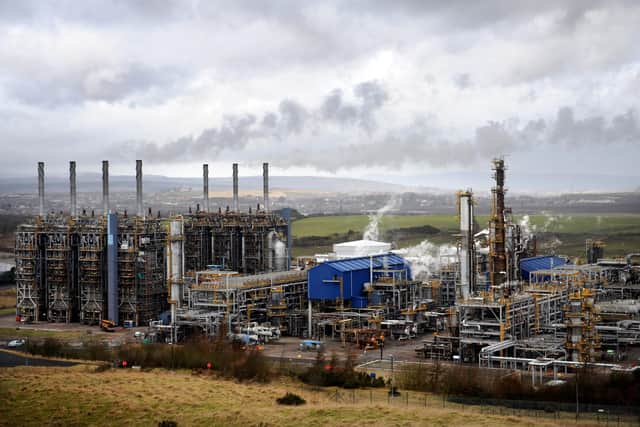Mossmorran: ground flare plans to be upgraded to minimise flaring
and live on Freeview channel 276
The current ground flare equipment has been in operation since 1985 when the plant was established. After nearly 40 years, it is due to be upgraded to improve performance and minimise overall impact.
Shell UK Ltd submitted an application for an Environmental Impact Assessment (EIA) screening opinion - a planning procedure used to determine whether a proposed project is likely to have significant effects on the environment - for the new enclosed ground flare (EGF) system.
Advertisement
Hide AdAdvertisement
Hide AdShell says the upgrade is necessary to meet SEPA permit requirements for best available techniques for routine flaring. Pending the council’s response, the proposed system would replace the two existing ground flares in operation at the site.


According to Shell, the Fife plant, which operates around the clock, every day of the year to process energy products. It separates gas and associated liquids taken from under the North Sea into propane, butane, and natural gasoline, and exports the products to customers around the world.
Part of the process involves flaring - which is occasionally required to operate the plant safely. Shell says the burning flare acts like a safety valve when the plant is not in normal processing. Last summer, SEPA issued a permit variation requiring a new flare system to be operational by the end of 2025. Shell says the new system will “smokelessly combust flare gas” which would otherwise be routed through the elevated flare.
“The elevated flare will remain a safety mechanism but the EGF will significantly minimise its use,” EIA planning papers stated. While there will be some light emission, the effects will be less than the existing ground flare technology or the elevated flare.”
Advertisement
Hide AdAdvertisement
Hide AdConstruction of the new ground flare system is anticipated to take approximately two years, and Shell believes it should be fully operational within three months of construction. Fife Council will consider the EIA request and issue a decision in due course.